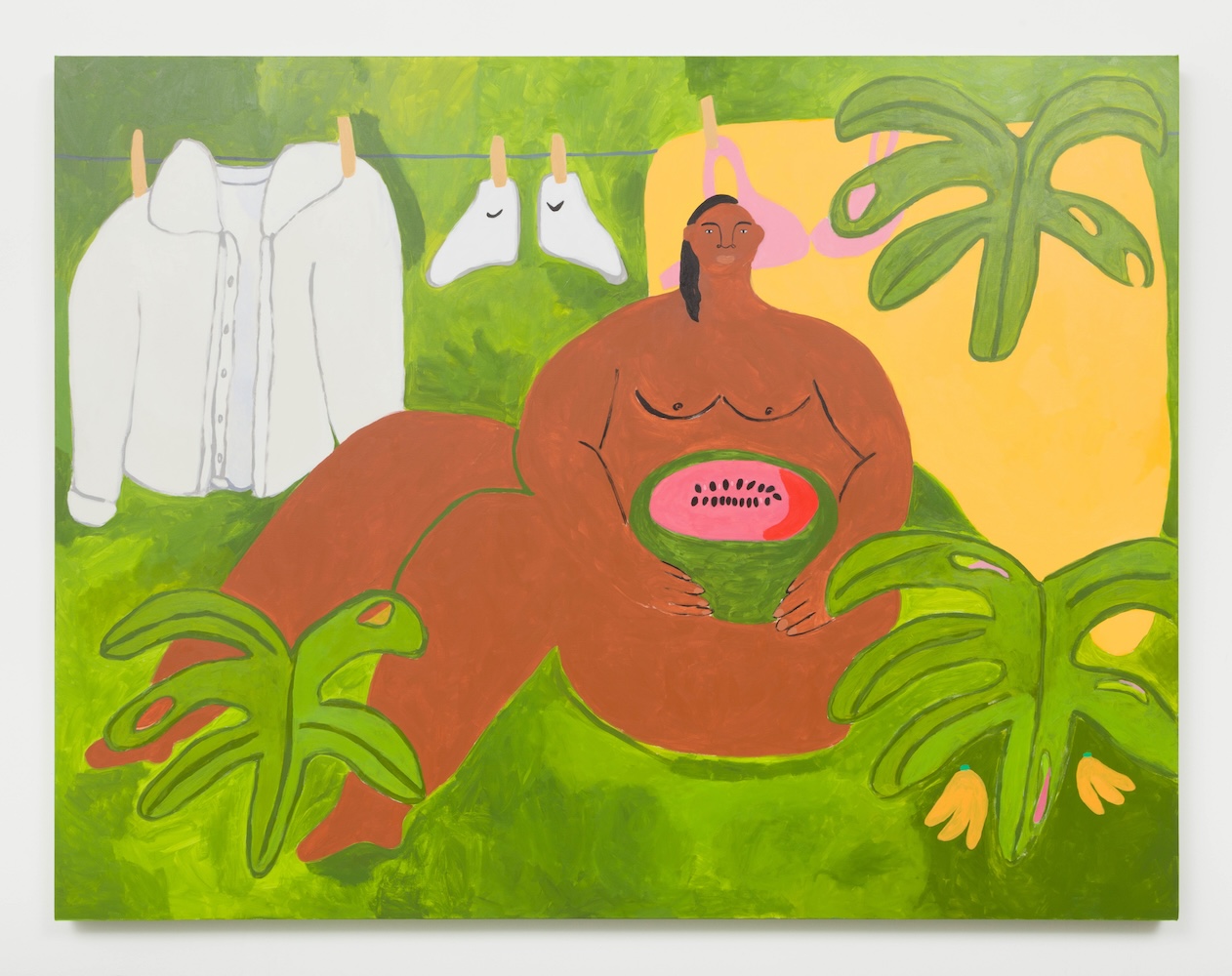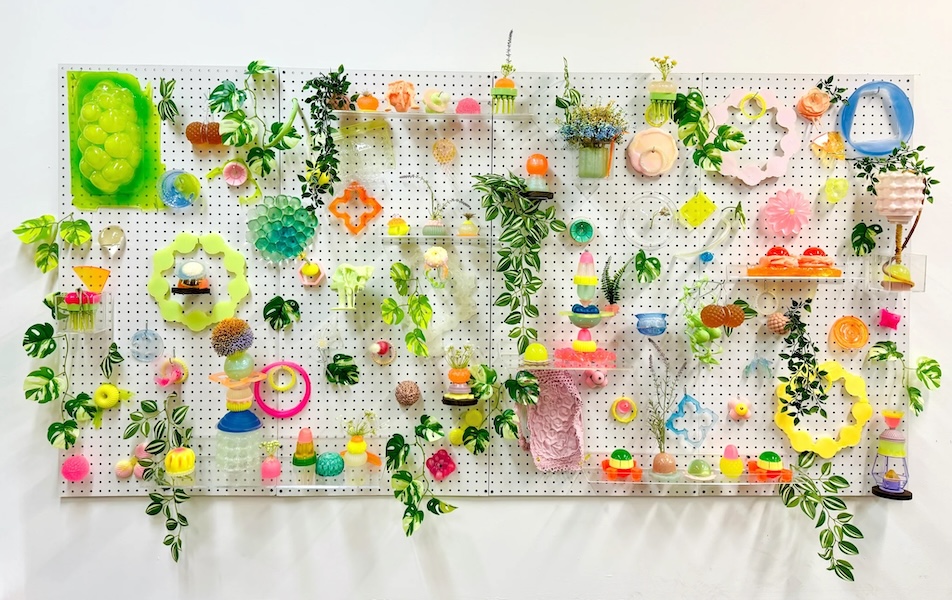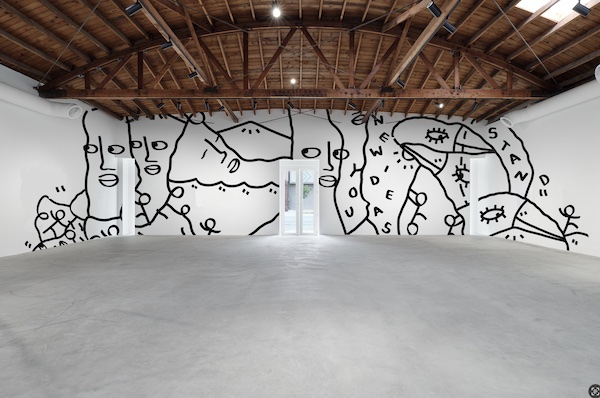For Frieze LA’s shining fifth edition, Essence Harden, Visual Arts Curator of the California African American Museum, spearheads the show’s Focus platform with a spirited theme of ecology. Bringing together singular galleries that have been running for 12 years and under, as well as a dozen vibrant emerging and underrepresented artists, Harden sparks a multi-dimensional conversation on the universal theme of contending with the ever-evolving environment and oneself.
Returning exhibitors including Sow & Tailor, Make Room, Hannah Traore Gallery, and Ochi, make way for debut Frieze LA presentations from Dominique Gallery, Nazarian/Curcio, Quinn Harrelson, and Matthew Brown.
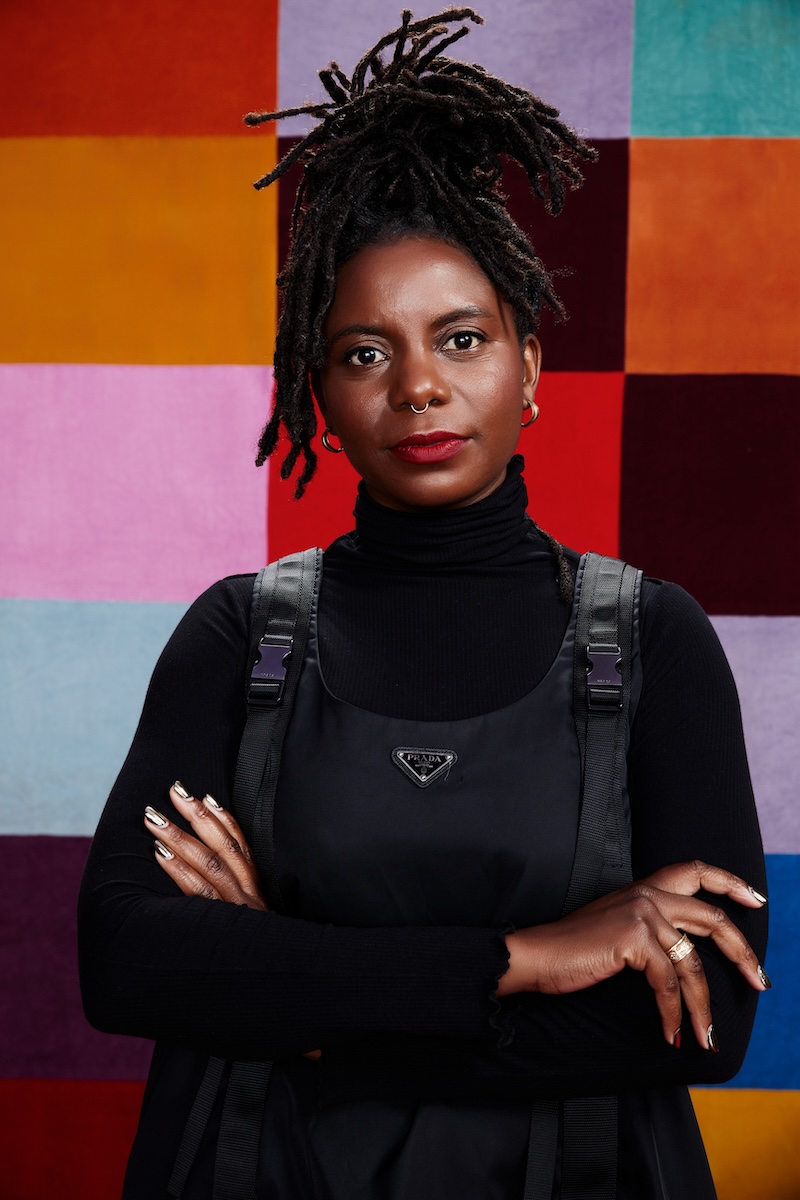
Portrait of Essence Harden, photo by Julia Johnson.
Harden Spotlights Artists Reshaping Histories on all Ecological Fronts
Within the fair’s Focus category, perceptive and courageous artists peel away longstanding mythologies on all ecological fronts for a rare opportunity to reshape collective and personal histories. Late visionary Harry Fonseca of LA-based Babst Gallery offers prismatic fluidity of experience with colorful mixed media works, while Chinese American sculptor Yeni Mao’s “Freemartins” unearths an awe-inspiring abstract approach to meaningful storytelling.
Whitewall had the opportunity to speak to Harden about curation as a community-making endeavor, the rapturous relationship between artists and materials, as well as profound hope for the open-hearted engagement of a global audience.
WHITEWALL: This year ushers in your inaugural curation of the Focus platform during the momentous fifth edition of Frieze Los Angeles. Can you share your initial inspiration to explore the vibrant theme of ecology through the creativity of emerging and underrepresented US galleries and artists?
ESSENCE HARDEN: I was trying to make sense of the disparate proposals I had chosen, and I sensed a tension the artists were working through between themselves and their environment. I was interested in how ecology allows for the ways this group of artists was contending with materials and narrative. Ecologies became broad enough to hold everybody and also rich enough for me to theorize and have different relationships with the diverse artistic practices on display, from James Perkins’s and his relationship to the “non-site” and environment as material to Widline Cadet’s, whose images engage with re/location, place-making and archive.
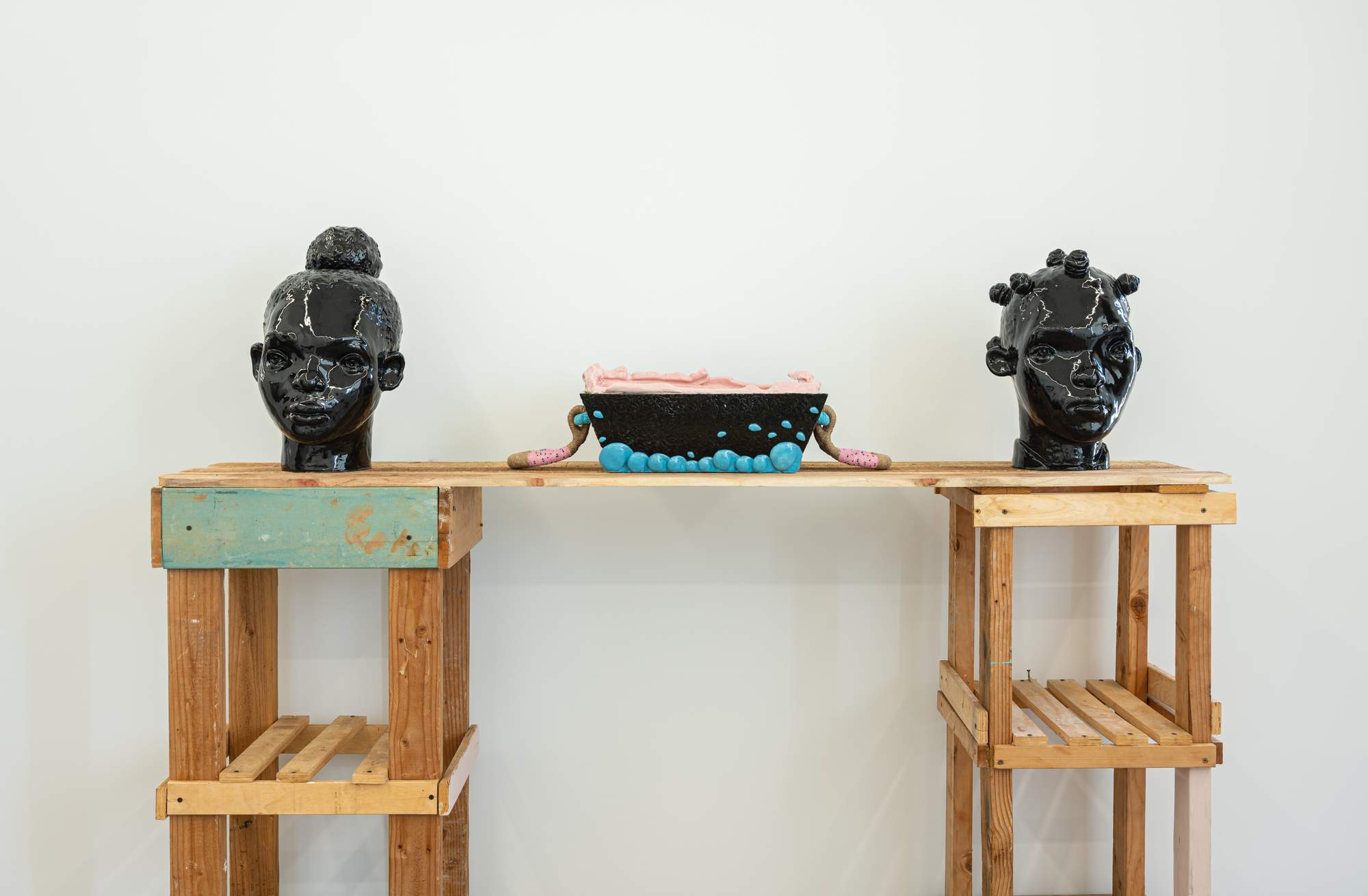
Mustafa Ali Clayton, “Sea Chest Powhatten,” 2021, Installation featuring 3 works (Sea Chest, Alisha, Rashida), 7.25 x 27 x 13 in., Earthenware clay, glaze, hemp rope, glass beads, wax; courtesy of the artist and Dominique Gallery.
The Endless Drive of Essence Harden to Invest in Artists and Community
WW: How did your current role as Visual Arts Curator and Program Manager of the California African American Museum, in addition to a wealth of prior experiences in exhibition curation, bring a unique perspective to this new endeavor?
EH: Fred Moten has a quote from The Undercommons: “Study is what you do with other people. It’s talking and walking around with other people, working, dancing, suffering, some irreducible convergence of all three, held under the name of speculative practice…the point of calling it ‘study’ is to mark that the incessant and irreversible intellectuality of these activities is already present.” He essentially gets at the community-making endeavor as sort of an endless drive and building upon, and I curate out of that kind of curiosity and space, which is something I learned during my PhD in Black Studies at UC Berkeley.
WW: Within this latest edition of Frieze, you stated that you were “deeply interested in the possibility of stretching the term ecology to include position, geography, material and theoretical concerns within art making.” How did you go about sparking this multifaceted investigation in the context of a globally renowned art fair?
ES: I think the artists did that—in the works that were proposed and ultimately chosen, I saw an investment by the artists in stretching the term. My capacity, as the curator, was to really see it, denote it, and create a language around what I thought was already happening. The artists are considering themselves in the world, particularly grappling with the environment and oneself, and that can be something that extends to other types of formation.
They show that the archive can be a type of environmental concern, wherein the materials used, and the composition of a painting can be a question of the environment and oneself in the environment. The idea of separation between human and place is false, so the kind of rapture that happens with these works is the product of the work itself.
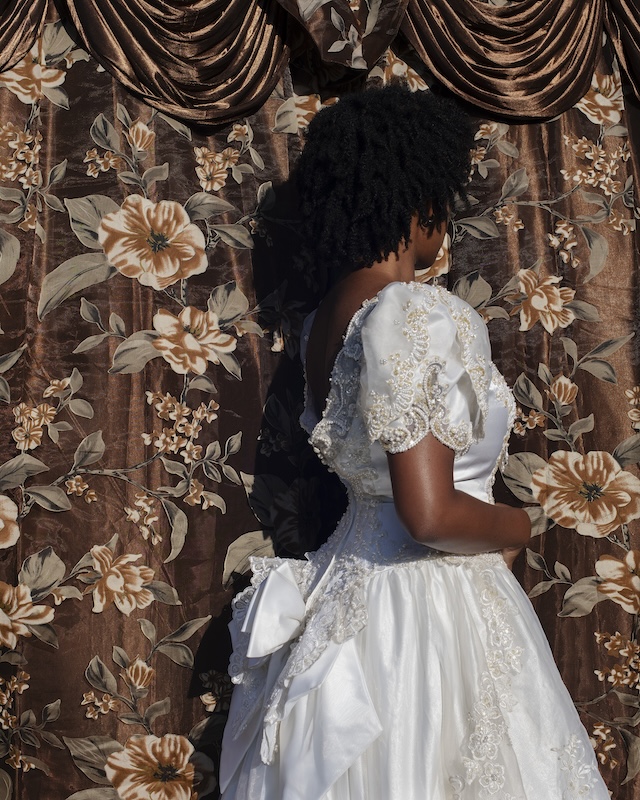
Widline Cadet, “Sòti nan gran lanmou (From Such Great Love),” 2023, 40 x 32 in., Archival inkjet print; Courtesy of the artist and Shulamit Nazarian, Los Angeles.
Fusing the Vitality of Past and New Works at Frieze LA
WW: Babst Gallery of Los Angeles makes their Frieze Los Angeles debut within Focus with an exhibition by the late visionary Harry Fonseca. The artist of Nisenan Maidu, Portuguese, and Hawaiian origins created lively and colorful mixed media works of Coyote mythology. How does the current offering of Fonseca’s potent imagination spur a vital dialogue on the fragile relationship between humans and our environment?
EH: I love the work and had never seen it in person, and the idea of having an artist who passed away almost 20 years ago being a part of a contemporary art fair feels vital. This character that he’s constantly working with, the coyote, exists as a queer, flexible, unfixed figure that has the capacity to work through a series of mythologies around place, around bodies, around sexuality, around experiences. Harry himself held various positionalities. So the environment here is really about figure and myth and how those things create a possibility to reconfigure histories.
WW: Los Angeles-based artist Javier Ramirez’s solo show exhibits both paintings and sculptures which delve into local immigrant realities, especially the gardening practices of Japanese and Latino individuals. How do you expect or hope international visitors might engage with these spirited works that honor the artistry and dedication of these frequently ignored communities?
EH: I hope that everyone entering the fair, no matter their nationality, spends time with the work and really gets to know it. That’s really my hope for art overall: that the objects themselves are allowed to have a rigorous sort of engagement free of prior concepts. For international, national, and local audiences alike, regardless if the work or gallery is new or familiar to you, I hope that the effort put into each presentation is taken up seriously and with deep consideration.
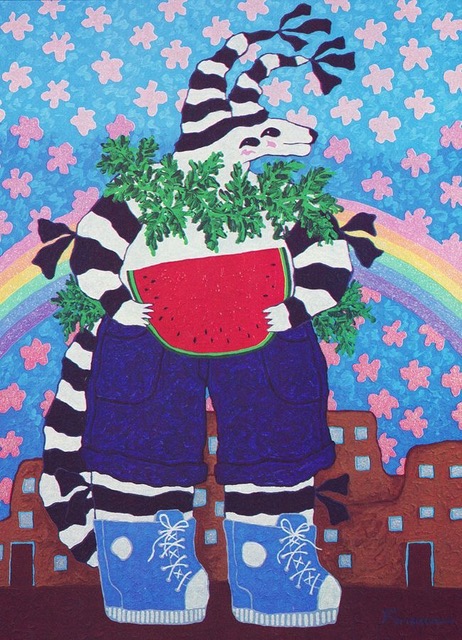
Harry Fonseca, “Coyote Koshare,” 1985, 40 x 36 in., Acrylic on canvas; Courtesy of the artist and Babst Gallery.
Uplifting 12 Diverse Galleries for the Latest Focus Platform
WW: What are some of the integral similarities as well as differences between your past projects and the curation of Focus at Frieze LA?
EH: The difference in curating for an art fair is that it’s temporary, it’s a quickly moving thing. As to the similarities, I curate from the same space regardless of what I’m doing, so I’m still doing multiple studio visits and artist site visits, trying to really understand the work conceptually and put effort and energy behind the research, showing up in my fullness as a curator.
One of my favorite things about the job is that it requires me to bend across all of these different genres, from scholarship and academia and teaching to studio visits and art making and writing. All of that really combines for me when I am creating a presentation like Focus, where I figured out what these 12 galleries were going to be, then worked backward to have something to say about the theory that was guiding them all.
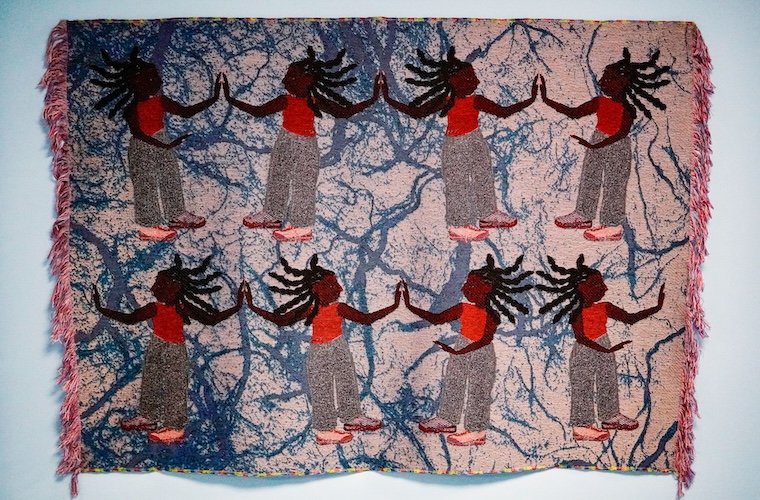
Siena Smith, “Talk to me,” 2023, Photo by Shardé Pettis, Courtesy of the artist and Chela Mitchell Gallery.
A Wealth of Ecological Storytelling through Abstract Forms
WW: Make Room gallery unveils Mexico-City-based, Chinese American sculptor Yeni Mao’s “Freemartins.” By way of mesmeric craftsmanship, Mao sheds light on the tunnels beneath the Mexico-U.S. border town of Mexicali. How does this particular presentation skillfully illuminate the theme of ecology and diasporic identities?
EH: This presentation is deeply ambitious, and the sculptures are just incredible. They deal quite deliberately with this underground tunnel network in Mexicali that Chinese immigrants and migrants used at the turn of the 20th century, so it has a direct relationship to a type of mapping, architecture, and imposition of boundaries. But the works themselves contend with those particular engineered constructions via abstract forms.
Mao has done his thing: with the amount of works that are being shown, the kind of rigor he imposed on them, and the deep storytelling they are imbued with. The work comes out of this investment in material and history, and so again the environment is this clause that can happen on a series of fronts, in a series of disciplines and genres. I think this sort of abstract sculptural approach to a historical moment, to a network of movement, and geological material is deeply intriguing and pays attention to that quality within the ecological.
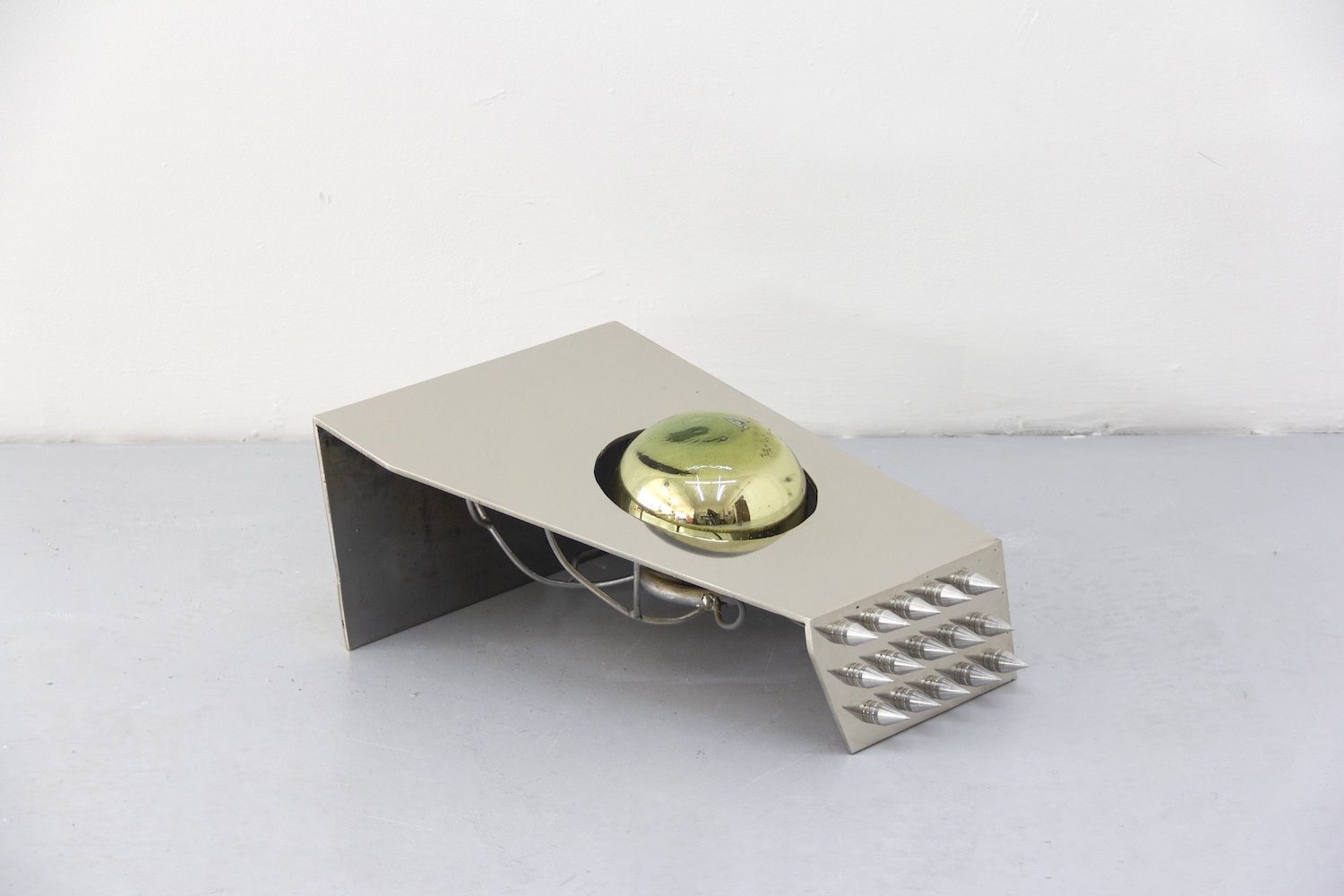
Yeni Mao, “fig 21.7 lossy,” 2023, 7 x 17 x 12 in., Nickel-plated steel, mercury glass, aluminum; Courtesy of the artist and Brooke Benington.
WW: What might you take with you from this experience for future undertakings?
EH: Every time I learn about more—artists, collectors, institutions, and venues for art—I add that to my broader, collective sense of how I can make art happen and how I can be a part of the community. Curating is so fun, and it’s such a wonderful way to have a job. It’s the people I’ve met and the things I didn’t know before that I’m looking to build up and bring into my future.
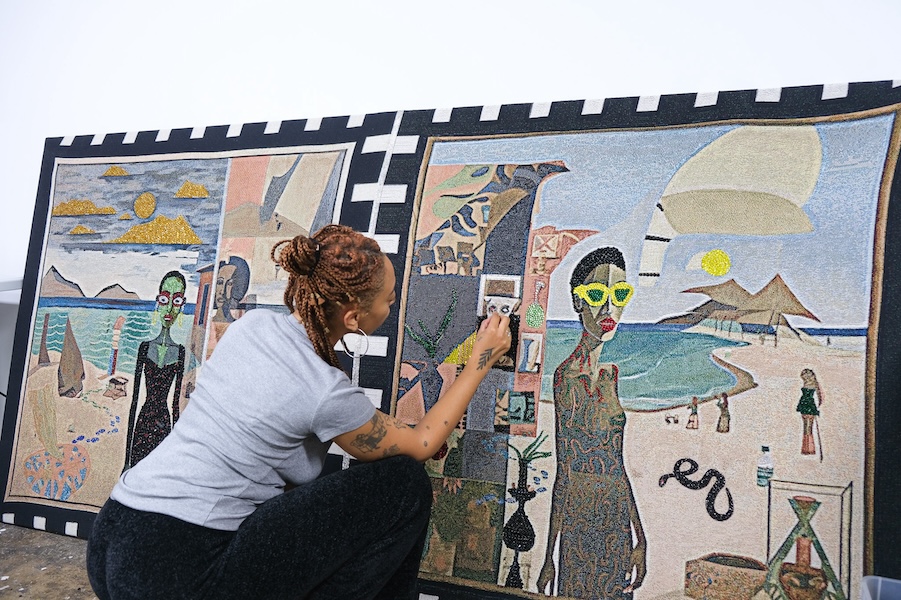
Akea Brionne working in her Kansas City studio, 2023, Courtesy the Artist and Lyles & King, New York.



